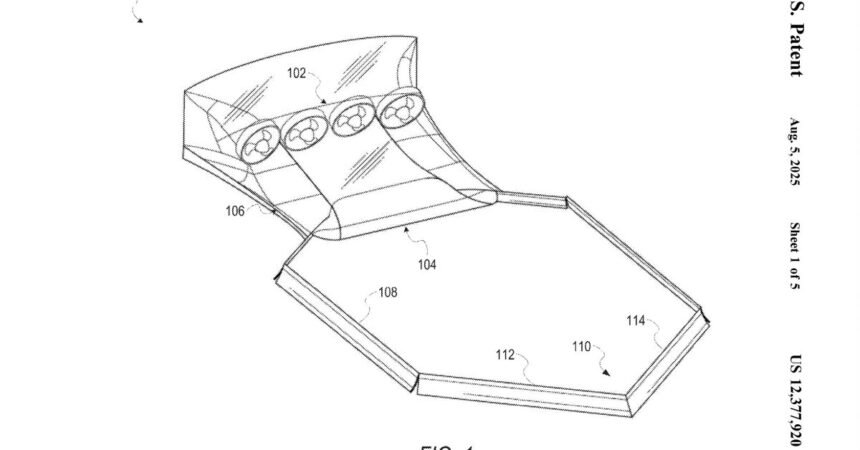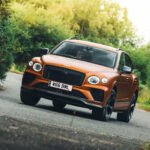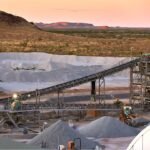It’s important to note that this technology is not new, as the concept of a fan car has been around since the 1970s. However, Tesla’s twist on this technology with the addition of advanced control systems could potentially offer significant performance improvements for the next-gen Roadster.
By using fans and side skirts to create a low-pressure vacuum effect, the Tesla Roadster could potentially achieve enhanced aerodynamic performance, improved handling, and increased traction. This would address the issue of traction limitations that many electric cars face, allowing for greater acceleration and overall performance.
Furthermore, the ability to control these systems automatically would provide flexibility in different driving situations. For example, the fans and skirts could adjust based on speed, cornering, or other variables to optimize performance and efficiency.
While the concept of a “flying” car may have been a bit of a stretch, the practical application of fan car technology in the Tesla Roadster could revolutionize the electric vehicle industry. By combining innovative design with advanced control systems, Tesla is pushing the boundaries of what is possible in automotive engineering.
As we await further updates on the development of the next-gen Roadster, it’s clear that Tesla is continuing to innovate and push the envelope in electric vehicle technology. The potential integration of a SpaceX package with fan car technology could make the Roadster not just a high-performance sports car, but a true engineering marvel.
With Tesla’s track record of groundbreaking innovation, the future looks bright for the next-gen Roadster and the electric vehicle industry as a whole. We can’t wait to see what other surprises Elon Musk and his team have in store for us!
With the advancement in technology, we are now starting to see new innovations in the automotive industry. One such innovation is the integration of active aerodynamics into fan cars, taking the concept to a whole new level.
Instead of using the same skirt deployment in all modes, there could be different modes tailored for different road surfaces. For high-quality, flat tracks, a maximum-downforce configuration could be used, while for uneven surfaces, a more flexible configuration could be employed to ensure a secure seal.
One of the challenges with fan cars is that they only work effectively on certain surfaces. If air leaks into the vacuum region beneath the vehicle, it can hinder the creation of negative pressure. This is where side skirts come into play, but they are not effective on surfaces with potholes or unsecured manhole covers.
Tesla envisions the system having various configurations for low and high-speed operations, adjusting the skirts based on weight transfer, and even detecting upcoming road conditions to modify the configuration accordingly. The idea of deploying skirts based on GPS position opens up the possibility of creating specific settings for optimized performance on different tracks or even individual corners.
Is this the “SpaceX Package,” or Something Else?
For years, Tesla has teased a “SpaceX package” for the Roadster to enhance its performance beyond the initial specs. This package was supposed to leverage expertise from SpaceX, another company led by Elon Musk, which shares a campus with Tesla in Hawthorne, CA.
Interestingly, one of the designers named on Tesla’s fan car patent, David Lemire, has worked at both Tesla and SpaceX in the past. The absence of terms like “fly,” “flight,” or “rocket” in the patent suggests that this technology focuses on enhancing ground performance rather than enabling flight.
It remains to be seen whether Tesla has additional plans involving thrusters or if the fan car concept will be complemented by a separate technology. The prospect of incorporating lateral thrusters for added performance raises questions about the complexity and weight implications on the vehicle.
While the fan car idea is a promising development for performance vehicles, it is unclear if this is the culmination of the much-hyped “SpaceX package” or if Tesla has more surprises in store for the Roadster.
With So Many Performance EVs, Does This Matter?
As the electric vehicle market continues to evolve, several high-performance EVs have already set new benchmarks in terms of speed and capabilities. Vehicles like the Rimac Nevera R, Lotus Evija X, and Xiaomi SU7 Ultra have demonstrated exceptional performance, outpacing traditional supercars and setting records on renowned tracks.
With the competition intensifying and the bar for performance being raised by various manufacturers, the question arises – does Tesla’s fan car innovation offer a significant advantage in this crowded landscape? While the concept of active aerodynamics through fan technology presents a unique approach, it faces stiff competition from already established players in the high-performance EV segment.
Despite the challenges posed by existing contenders, Tesla’s fan car innovation could still carve a niche for itself by offering a distinct performance enhancement that sets it apart from the rest. The evolution of electric vehicles has brought about a paradigm shift in the automotive industry, and Tesla’s foray into fan car technology underscores its commitment to pushing the boundaries of innovation.
As the automotive industry embraces electrification and advances in technology, the race for supremacy in performance EVs continues to intensify. Whether Tesla’s fan car concept will emerge as a game-changer or face tough competition remains to be seen, but one thing is certain – innovation is the key to staying ahead in this rapidly evolving landscape.
The McMurtry Spierling has made history as the fastest car ever at Goodwood, thanks to the incredible 2,000kg of downforce generated by the massive fans underneath the 1,000kg vehicle. This downforce is available even when the car is stationary at 0mph, a feat that traditional aerodynamic surfaces cannot achieve.
In a jaw-dropping demonstration of the Spierling’s capabilities, the car was briefly driven upside down to showcase the immense downforce generated by its fans. This daring maneuver solidified the Spierling’s reputation as a groundbreaking innovation in the world of automotive engineering.
While the Spierling is a purpose-built, track-focused single-seat racecar, Tesla has also entered the arena with a flexible solution that could revolutionize roadgoing sports cars. Tesla’s patented technology offers adaptability and versatility, allowing for travel on less track-prepped terrain compared to the Spierling.
However, the practicality of fan car technology for consumer vehicles remains a point of contention. The potential hazards of high-velocity debris being expelled from the vehicle raise safety concerns, although Tesla has included a filter in its patent to address this issue.
Another consideration is the impact of adjustable downforce on driver skill. The dynamic nature of downforce levels could pose challenges for drivers accustomed to traditional performance vehicles, requiring a new level of adaptability and awareness on the road.
As Tesla contemplates the possibility of bringing fan car technology to the market, the question remains whether this innovative concept will ever see the light of day. Despite being five years behind schedule, the allure of a high-performance, fan-driven vehicle may be too enticing to ignore.
In conclusion, the evolution of fan car technology represents a paradigm shift in the automotive industry, pushing the boundaries of what is possible on the road and the track. Whether the future holds widespread adoption of fan car technology or remains a niche innovation, the Spierling and Tesla’s foray into this realm have paved the way for a new era of high-performance vehicles. the perspective of a travel writer exploring a remote island in the Pacific Ocean.
As a travel writer, I have been fortunate enough to explore many exotic destinations around the world. However, my recent trip to a remote island in the Pacific Ocean was truly an unforgettable experience. Located off the beaten path and far from the hustle and bustle of everyday life, this island offered a sense of tranquility and serenity that is hard to find in today’s fast-paced world.
Getting to the island was an adventure in itself. After a long journey by plane and boat, I finally arrived at this hidden gem in the Pacific. As I stepped off the boat onto the sandy shore, I was greeted by the warm tropical breeze and the sound of waves crashing against the shore. The crystal-clear waters sparkled in the sunlight, inviting me to dive in and explore the underwater world that lay beneath the surface.
I spent my days on the island exploring its lush jungles, pristine beaches, and hidden coves. The island was teeming with wildlife, from colorful birds to playful dolphins that frolicked in the ocean. One of the highlights of my trip was hiking to the island’s highest peak, where I was rewarded with panoramic views of the turquoise sea and verdant landscape stretching out before me.
The island’s local culture was also a fascinating aspect of my trip. The people were warm and welcoming, eager to share their customs and traditions with me. I had the opportunity to participate in a traditional dance ceremony and sample delicious local cuisine made from fresh seafood and tropical fruits.
But perhaps the most memorable part of my trip was the sense of peace and solitude that I found on the island. Far from the distractions of modern life, I was able to disconnect from technology and immerse myself in the natural beauty that surrounded me. I spent evenings watching the sunset over the ocean, marveling at the vibrant colors that painted the sky in shades of pink and orange.
As I reluctantly said goodbye to the island and boarded the boat back to the mainland, I knew that this trip had been a once-in-a-lifetime experience. The memories of my time on the remote island in the Pacific Ocean will stay with me forever, reminding me of the beauty and wonder that can be found in the most unexpected of places.







